Top 10 Purple and Yellow Flowers to Brighten Your Landscape
Discover our curated selection of the top 10 purple and yellow flowers that will add vibrant colors and beauty to your landscape. From cheerful sunflowers to delicate lavender blooms, find inspiration and practical tips for incorporating these stunning flowers into your garden design.
Are you looking to add some pizzazz to your garden? Purple and yellow flowers are a great way to make your outdoor space pop with color. These two colors look amazing together, creating a bold and beautiful contrast. In this article, we’ll explore the top 10 purple and yellow flowers that can transform your landscape into a vibrant paradise. Let’s dive in!
1. Sunflower
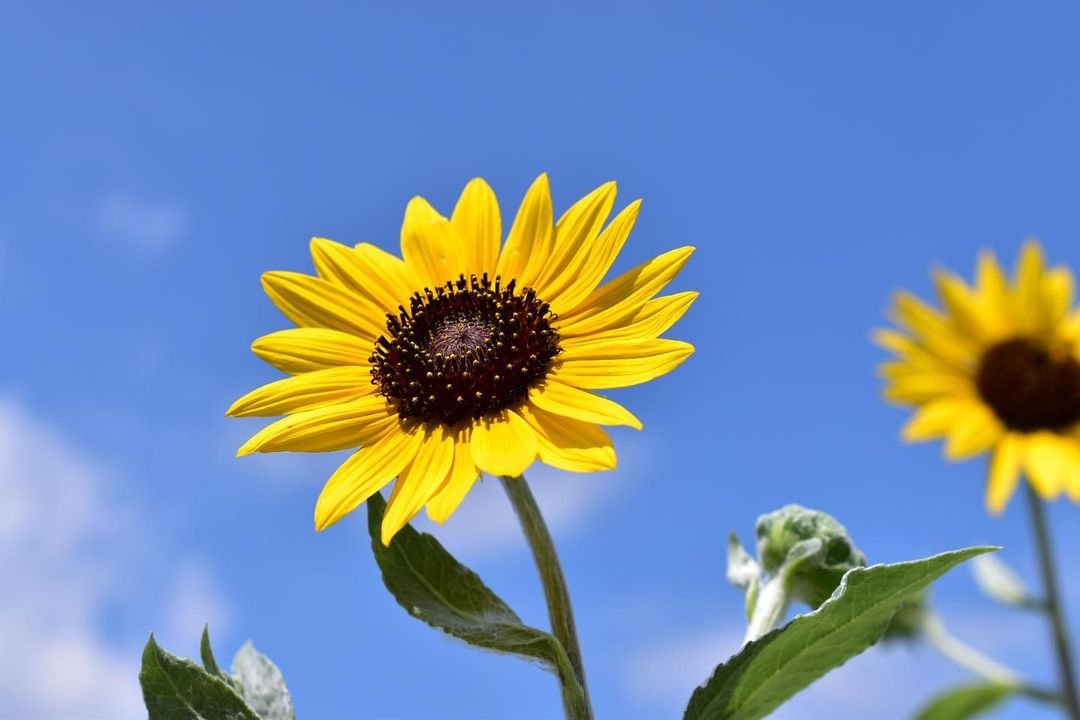
Here’s a simplified and verified chart for Sunflower (Helianthus annuus):
| Botanical Name | Helianthus annuus |
|---|---|
| Common Name | Sunflower |
| Plant Type | Annual |
| Hardiness Zone | Zones 3-10 (may vary by variety) |
| Sun Exposure | Full sun |
| Soil Type | Well-drained, fertile soil |
| Watering | Moderate |
| Growth Habit | Upright, branching |
| Height/Spread | 3-12 feet tall, 1-3 feet wide |
| Special Features | Large, yellow flowers; attracts pollinators |
Let’s start with a classic yellow flower – the sunflower. These tall, cheerful blooms are sure to bring a smile to your face.
Growing tips:
- Plant in full sun
- Water regularly
- Support tall varieties with stakes
Learn more about growing sunflowers
2. Lavender
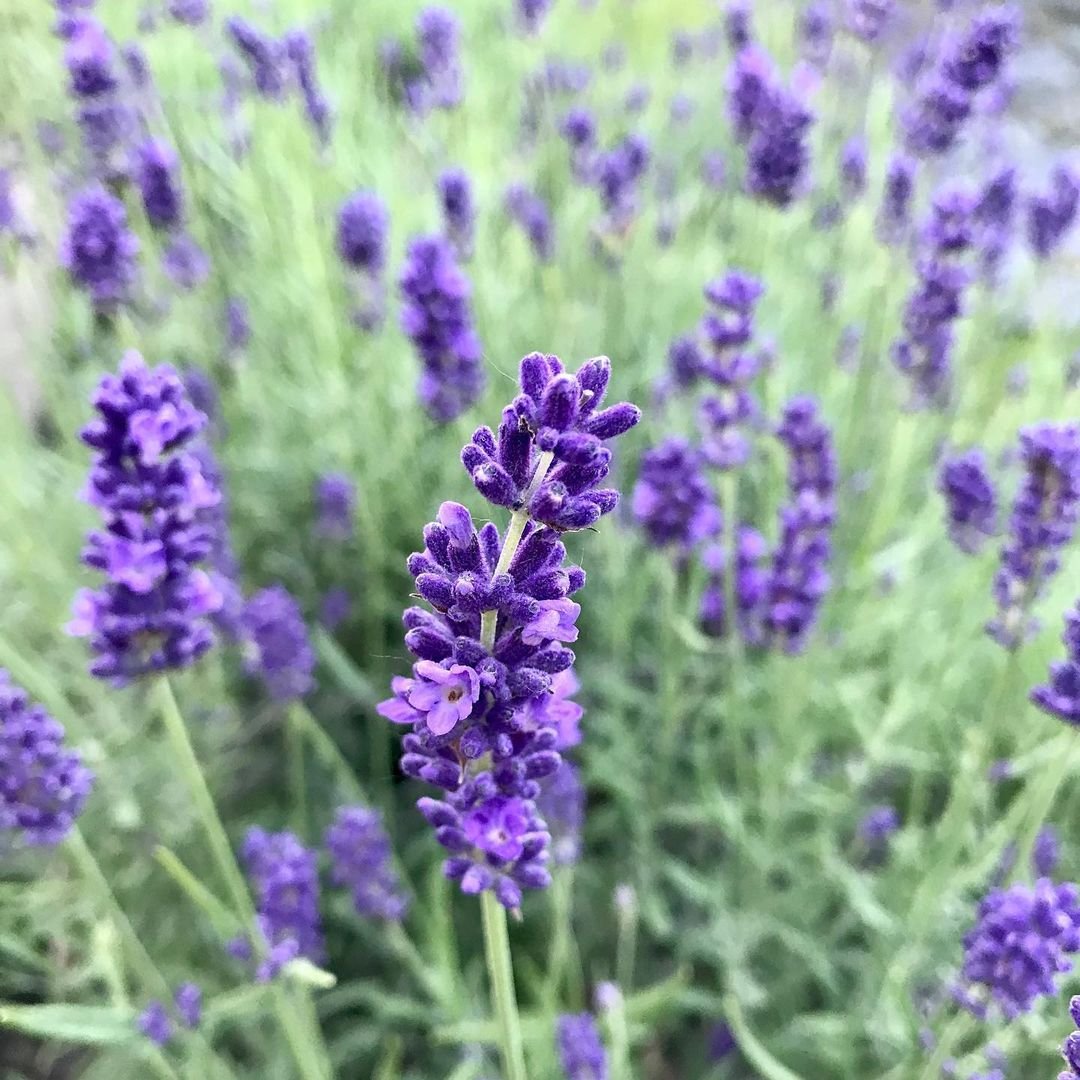
Here’s a detailed and verified chart for Lavender (Lavandula):
| Botanical Name | Lavandula spp. |
|---|---|
| Common Name | Lavender |
| Plant Type | Perennial herbaceous |
| Hardiness Zone | Zones 5-9 (may vary by species) |
| Sun Exposure | Full sun |
| Soil Type | Well-drained, sandy or loamy |
| Watering | Low to moderate |
| Growth Habit | Compact, bushy |
| Height/Spread | 1-3 feet tall, 1-3 feet wide |
| Special Features | Fragrant flowers and foliage; attracts pollinators; drought-tolerant; deer-resistant |
For a touch of purple, lavender is hard to beat. Its fragrant blooms are loved by bees and humans alike.
Growing tips:
- Plant in full sun
- Needs well-draining soil
- Prune after flowering
Discover lavender growing techniques
3. Black-Eyed Susan
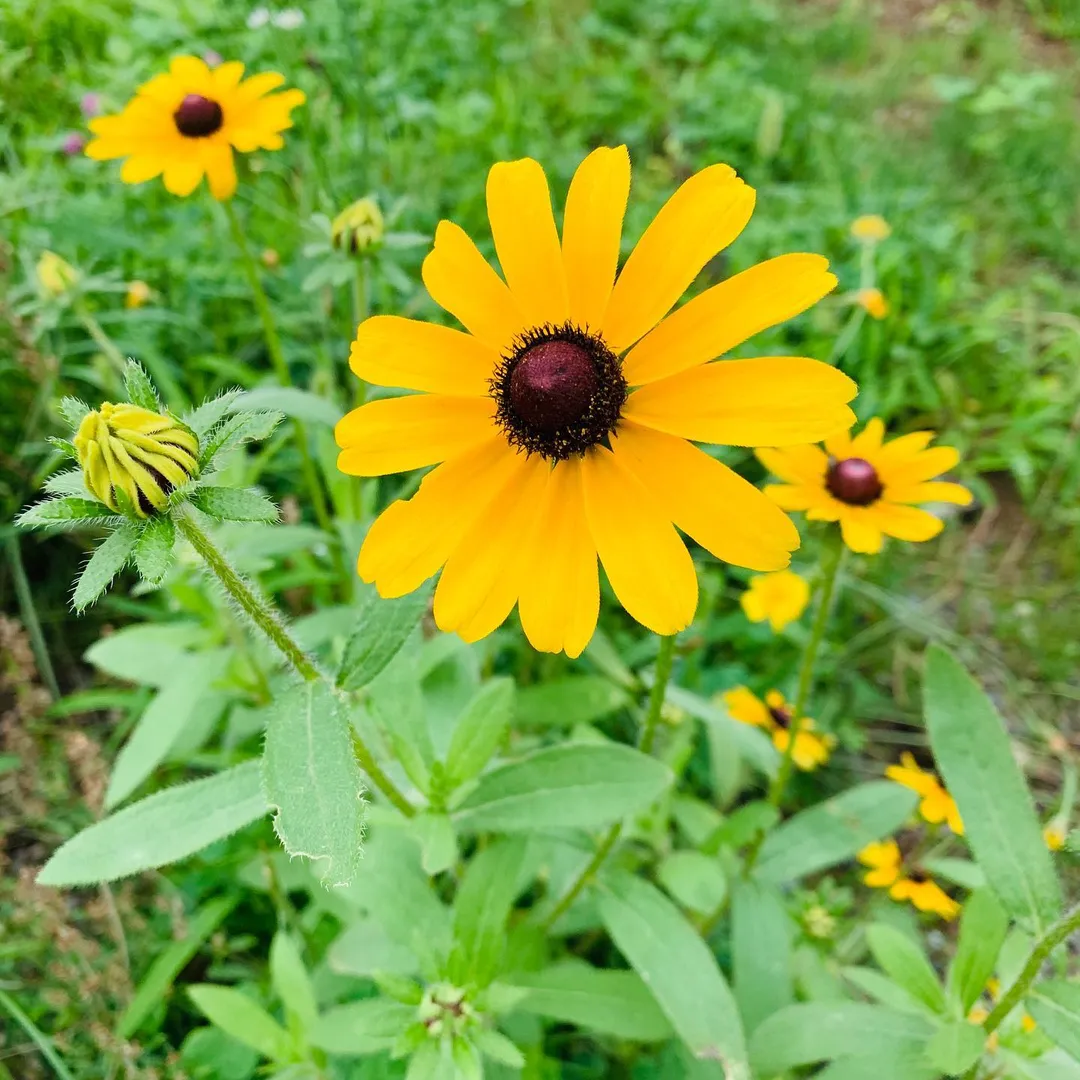
Here’s an easy and verified chart for Black-Eyed Susan (Rudbeckia hirta):
| Botanical Name | Rudbeckia hirta |
|---|---|
| Common Name | Black-Eyed Susan |
| Plant Type | Perennial |
| Hardiness Zone | Zones 3-9 |
| Sun Exposure | Full sun to part shade |
| Soil Type | Well-drained, average fertility |
| Watering | Moderate |
| Growth Habit | Upright, clumping |
| Height/Spread | 1-3 feet tall, 1-2 feet wide |
| Special Features | Yellow daisy-like flowers with dark centers; attracts pollinators; deer-resistant; drought-tolerant |
These daisy-like yellow flowers with dark centers are perfect for a wildflower garden.
Growing tips:
- Tolerates various soil types
- Drought-resistant once established
- Deadhead for continuous blooming
4. Purple Coneflower
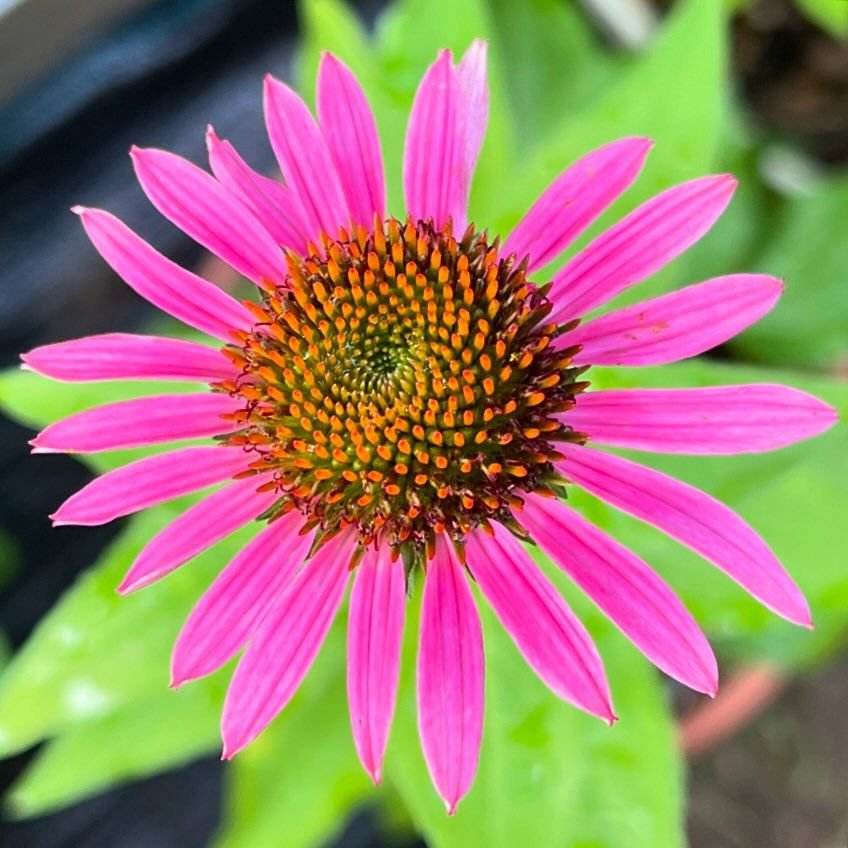
Here’s an easy and verified chart for Purple Coneflower (Echinacea purpurea):
| Botanical Name | Echinacea purpurea |
|---|---|
| Common Name | Purple Coneflower |
| Plant Type | Perennial |
| Hardiness Zone | Zones 3-8 |
| Sun Exposure | Full sun to part shade |
| Soil Type | Well-drained, fertile |
| Watering | Moderate |
| Growth Habit | Upright, clumping |
| Height/Spread | 2-4 feet tall, 1-2 feet wide |
| Special Features | Purple-pink daisy-like flowers with prominent cones; attracts pollinators; drought-tolerant; deer-resistant |
With its distinctive drooping petals, the purple coneflower is a butterfly magnet.
Growing tips:
- Plant in full sun to partial shade
- Tolerates poor soil
- Divide every 3-4 years
Learn about Echinacea benefits
5. Daffodil
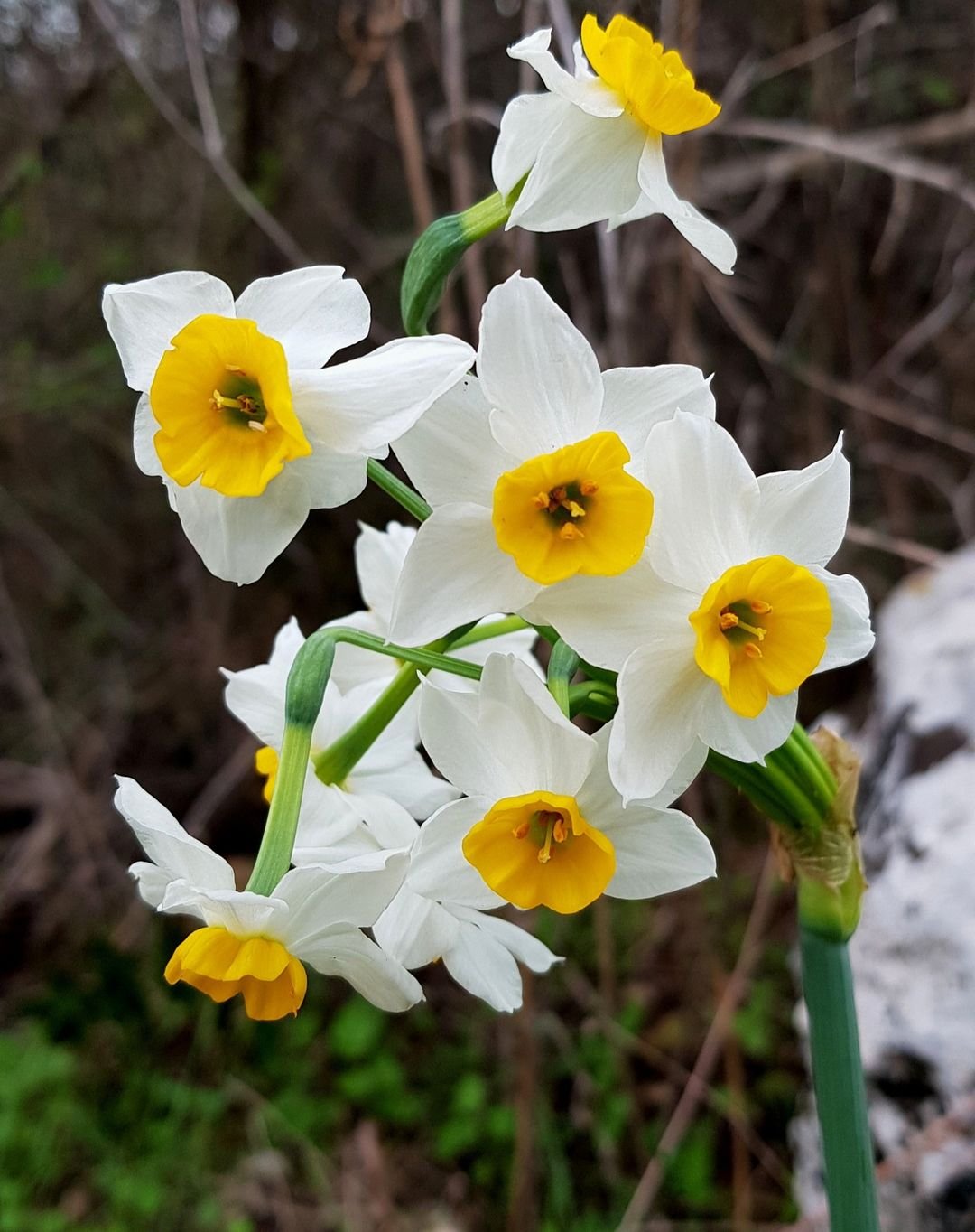
Here’s an easy and verified chart for Daffodil (Narcissus):
| Botanical Name | Narcissus spp. |
|---|---|
| Common Name | Daffodil |
| Plant Type | Bulb |
| Hardiness Zone | Zones 3-9 (may vary by species) |
| Sun Exposure | Full sun to part shade |
| Soil Type | Well-drained |
| Watering | Moderate |
| Growth Habit | Upright, clumping |
| Height/Spread | 6 inches to 2 feet tall, varies by variety |
| Special Features | Trumpet-shaped flowers in yellow, white, or orange; deer-resistant; early spring bloomer; naturalizes easily |
These early spring bloomers are a classic yellow flower that naturalizes easily.
Growing tips:
- Plant bulbs in fall
- Needs well-draining soil
- Let foliage die back naturally after blooming
Discover daffodil planting techniques
6. Iris

Here’s an easy and verified chart for Iris (Iris germanica):
| Botanical Name | Iris germanica |
|---|---|
| Common Name | Bearded Iris |
| Plant Type | Perennial |
| Hardiness Zone | Zones 3-9 |
| Sun Exposure | Full sun to part shade |
| Soil Type | Well-drained |
| Watering | Moderate |
| Growth Habit | Rhizomatous, clumping |
| Height/Spread | 1-3 feet tall, 1-2 feet wide |
| Special Features | Large, showy flowers in various colors; sword-like foliage; deer-resistant; drought-tolerant; blooms in spring |
Irises come in both purple and yellow varieties, making them perfect for our color scheme.
Growing tips:
- Plant in full sun to partial shade
- Divide every 3-5 years
- Avoid overwatering
Explore iris care and varieties
7. Pansy
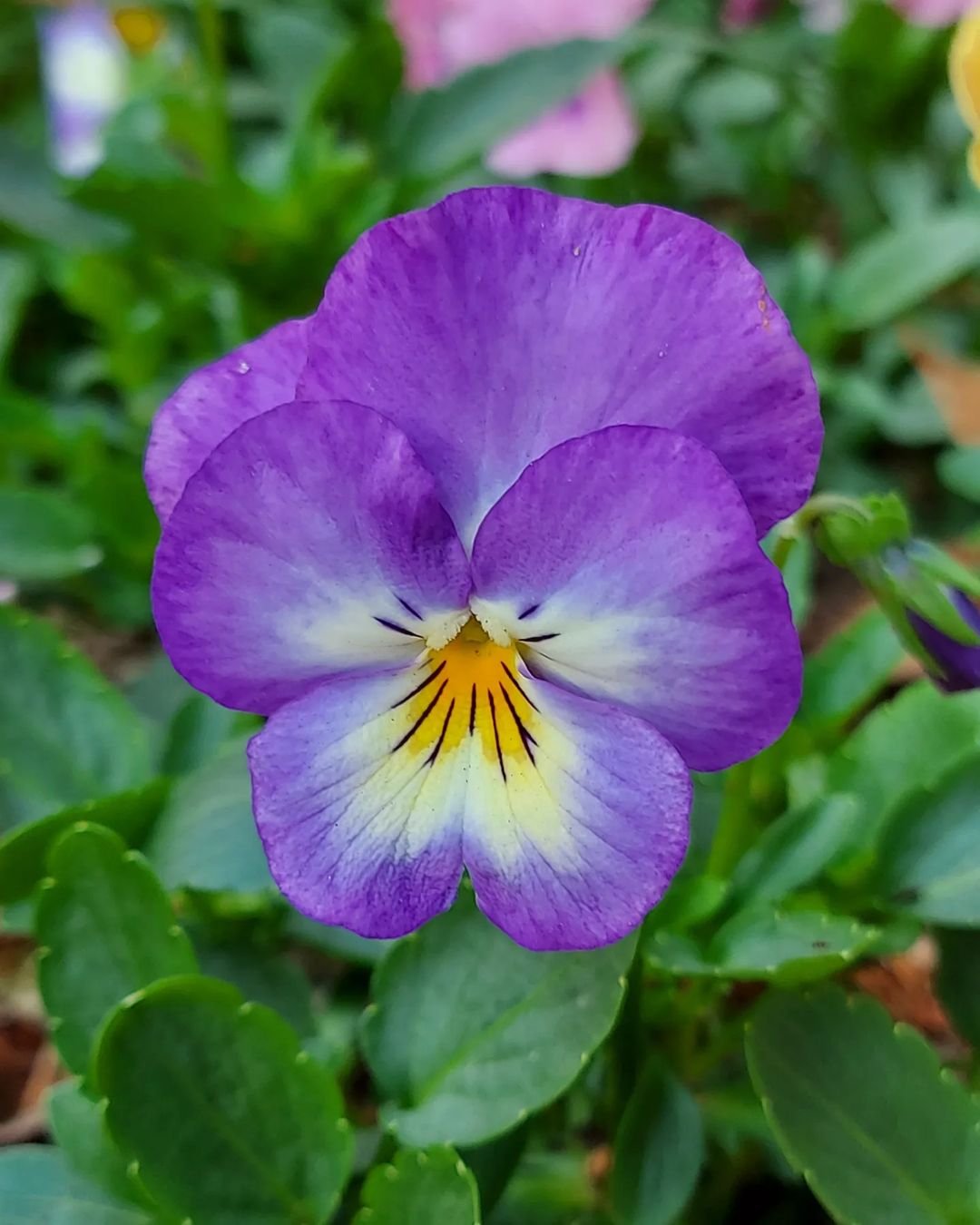
Here’s an easy and verified chart for Pansy (Viola x wittrockiana):
| Botanical Name | Viola x wittrockiana |
|---|---|
| Common Name | Pansy |
| Plant Type | Annual or short-lived perennial |
| Hardiness Zone | Zones 4-8 (typically grown as an annual) |
| Sun Exposure | Full sun to part shade |
| Soil Type | Well-drained, fertile |
| Watering | Moderate |
| Growth Habit | Compact, spreading |
| Height/Spread | 6-9 inches tall, 6-9 inches wide |
| Special Features | Large, colorful flowers with “faces”; cool-season plant; frost tolerant; attracts pollinators |
These cheerful flowers come in both purple and yellow, often with interesting face-like markings.
Growing tips:
- Plant in partial shade
- Water regularly
- Remove faded flowers to encourage more blooms
8. Crocus
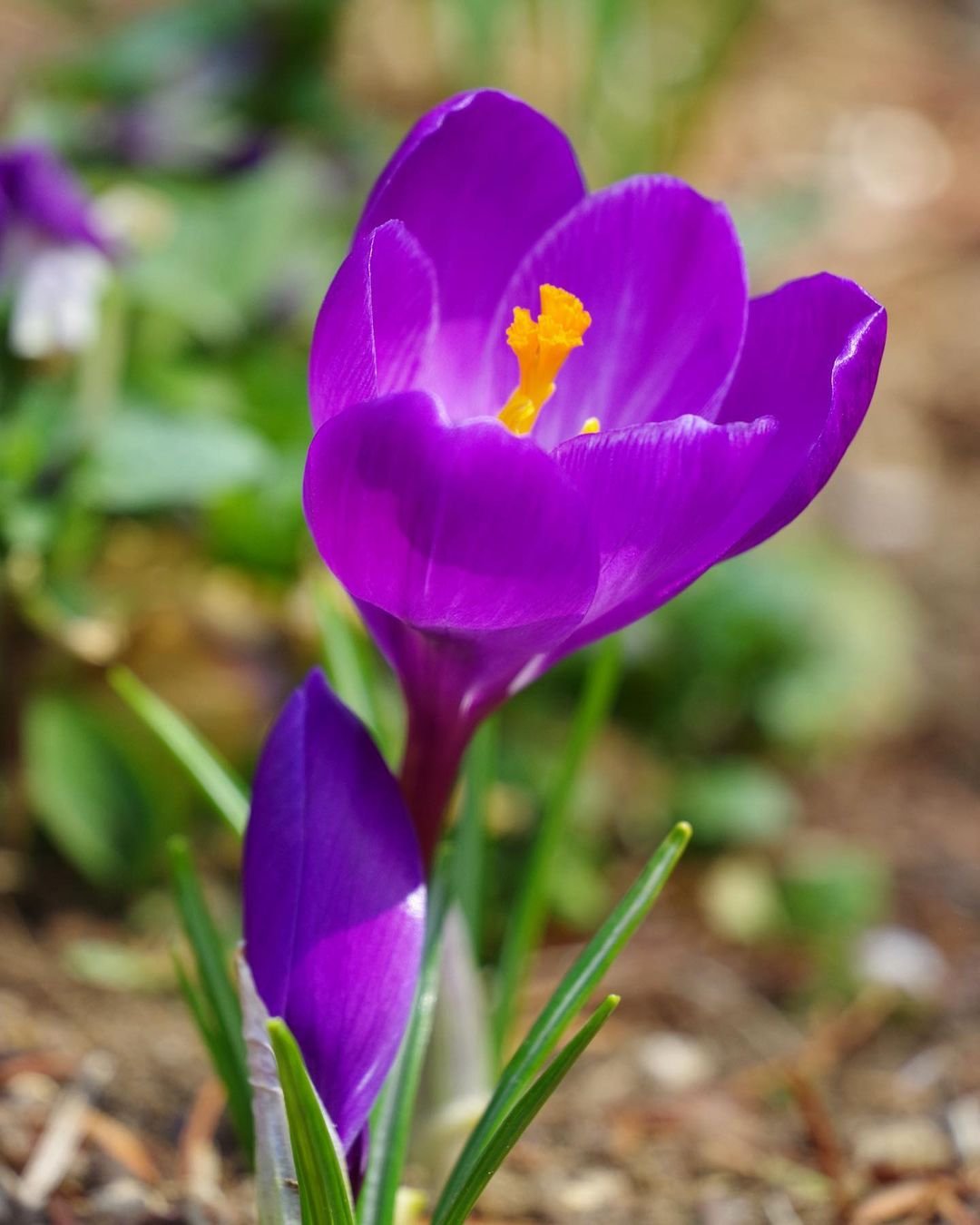
Here’s an easy and verified chart for Crocus:
| Botanical Name | Crocus spp. |
|---|---|
| Common Name | Crocus |
| Plant Type | Corm |
| Hardiness Zone | Zones 3-8 |
| Sun Exposure | Full sun to part shade |
| Soil Type | Well-drained |
| Watering | Moderate |
| Growth Habit | Low-growing, clumping |
| Height/Spread | 3-6 inches tall, 3-6 inches wide |
| Special Features | Early spring bloomer; flowers in shades of purple, yellow, white, or striped; naturalizes easily; deer-resistant |
These early spring bloomers come in both purple and yellow, often popping up through the snow.
Growing tips:
- Plant bulbs in fall
- Needs well-draining soil
- Let foliage die back naturally after blooming
Discover crocus planting techniques
9. Aster
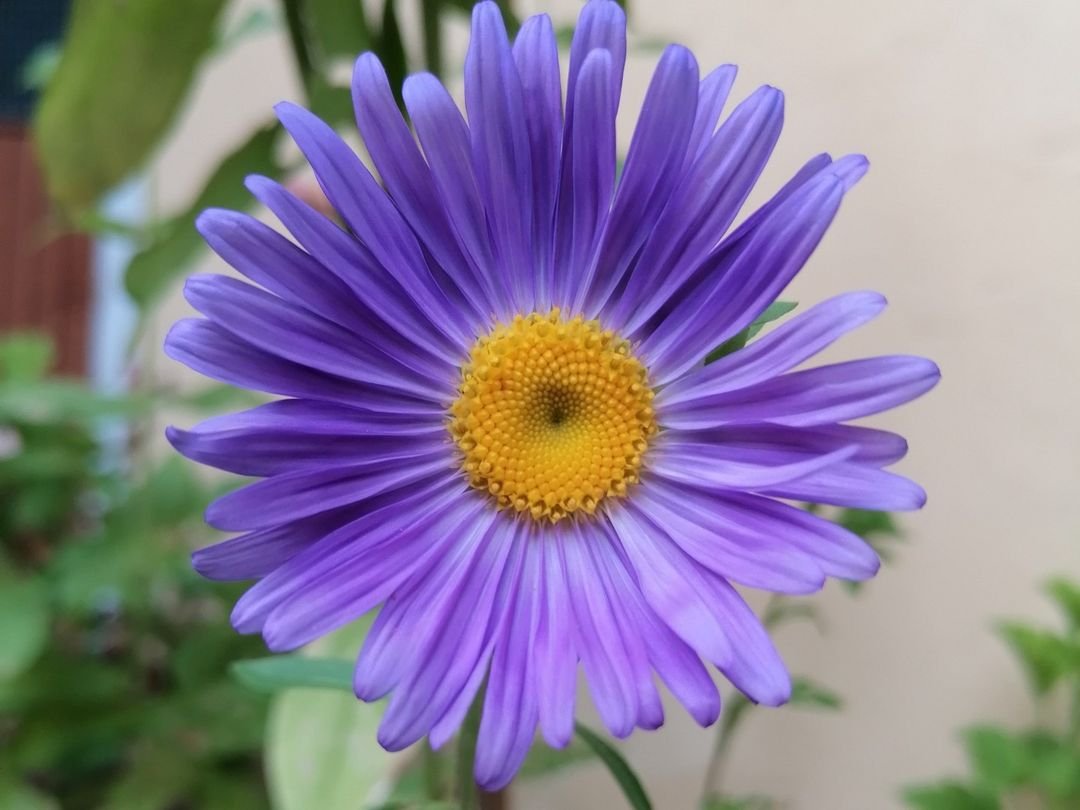
Here’s an easy and verified chart for Aster (Asteraceae family):
| Botanical Name | Aster spp. (various species within Asteraceae family) |
|---|---|
| Common Name | Aster |
| Plant Type | Perennial (some species are annual or biennial) |
| Hardiness Zone | Zones 3-9 (depends on species) |
| Sun Exposure | Full sun to part shade |
| Soil Type | Well-drained, fertile |
| Watering | Moderate |
| Growth Habit | Upright, bushy |
| Height/Spread | 1-6 feet tall, 1-3 feet wide (varies by species) |
| Special Features | Daisy-like flowers in various colors (purple, blue, pink, white); attracts pollinators; deer-resistant; blooms late summer to fall |
Late-blooming asters come in shades of purple and add fall interest to your garden.
Growing tips:
- Plant in full sun
- Pinch back in early summer for bushier growth
- Divide every 2-3 years
Explore aster varieties and care
10. Dahlia
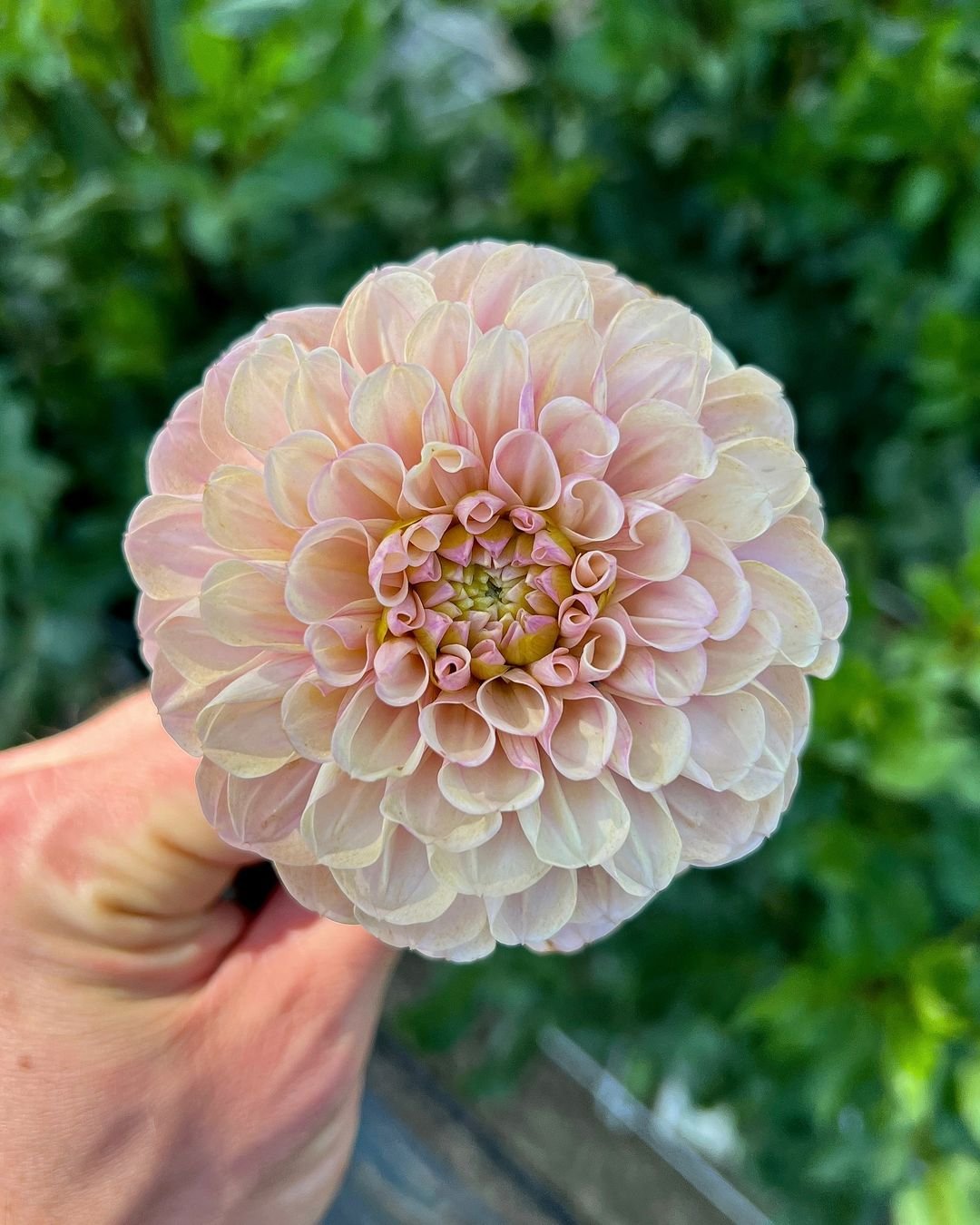
Dahlias come in a wide range of colors, including deep purples and bright yellows.
Growing tips:
- Plant in full sun
- Stake tall varieties
- Lift tubers in fall in cold climates
Learn dahlia growing techniques
Creating a Purple and Yellow Garden Design
Now that we’ve explored these beautiful flowers, let’s talk about how to use them in your garden design.
- Create Contrast: Plant purple and yellow flowers next to each other for maximum impact. For example, try planting lavender and black-eyed Susans together.
- Use Different Heights: Combine tall flowers like sunflowers with shorter ones like pansies to add visual interest.
- Plan for Continuous Bloom: Choose flowers that bloom at different times to ensure color throughout the growing season.
- Consider Foliage: Some plants, like purple-leaved cannas, can add to your color scheme even when not in bloom.
- Don’t Forget Container Gardens: Purple and yellow flowers can look stunning in pots on a patio or balcony.
Get more tips on garden design
Caring for Your Purple and Yellow Flower Garden
To keep your colorful garden looking its best:
- Water Regularly: Most flowers need consistent moisture, especially during dry spells.
- Fertilize: Use a balanced fertilizer to promote healthy growth and abundant blooms.
- Deadhead: Remove faded flowers to encourage more blooming.
- Mulch: Apply a layer of mulch to retain moisture and suppress weeds.
- Watch for Pests: Keep an eye out for common garden pests and deal with them promptly.
Learn more about garden maintenance
Benefits of Purple and Yellow Flowers
Besides looking beautiful, these flowers offer other benefits:
- Attract Pollinators: Many of these flowers are loved by bees, butterflies and hummingbirds.
- Cut Flowers: Many, like sunflowers and dahlias, make excellent cut flowers for indoor bouquets.
- Medicinal Uses: Some, like echinacea and lavender, have traditional medicinal uses.
- Edible Flowers: Certain varieties, like pansies, can be used as edible garnishes.
Discover more about the benefits of gardening
Purple and yellow flowers can truly transform your landscape into a vibrant, eye-catching display. From the cheerful faces of pansies to the stately blooms of irises, these flowers offer a wide range of shapes, sizes and blooming times to keep your garden interesting throughout the growing season.
Remember, successful gardening is about more than just choosing pretty flowers. It’s about understanding your local climate, soil conditions, and the specific needs of each plant. Don’t be afraid to experiment and try new combinations – that’s part of the fun of gardening!
Whether you’re a seasoned gardener or just starting out, incorporating these purple and yellow flowers into your landscape can bring joy and beauty to your outdoor space. So why not give it a try? Your garden (and the local pollinators) will thank you!
Happy gardening and may your landscape be filled with the vibrant hues of purple and yellow flowers!
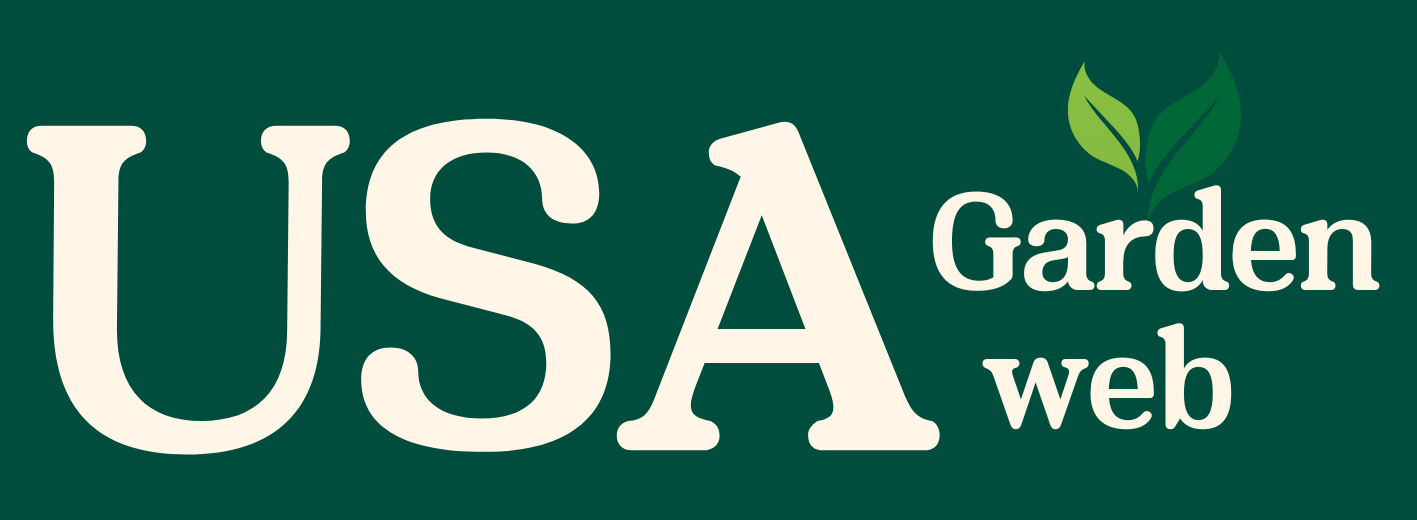
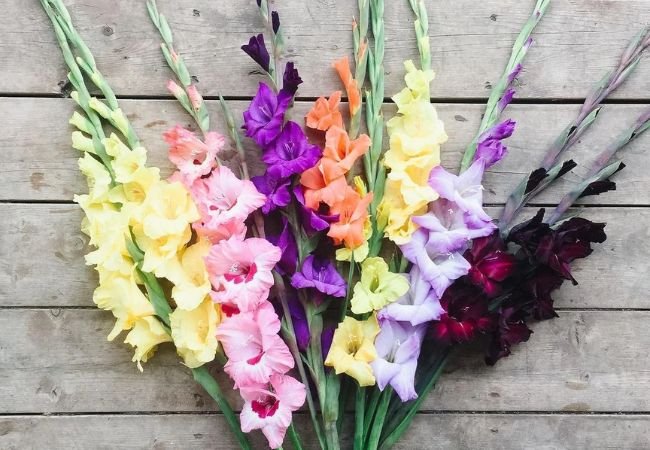
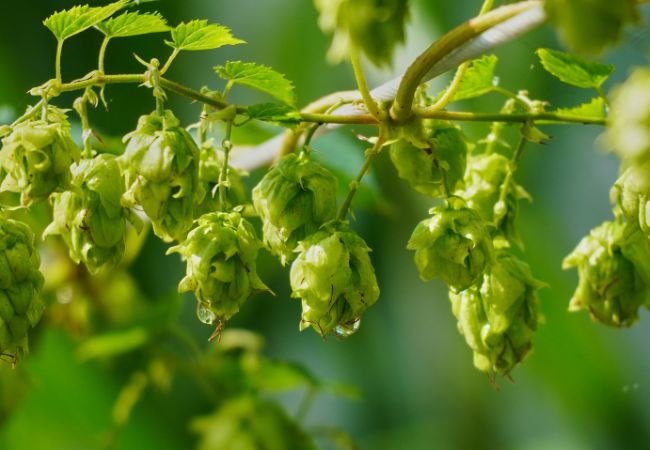
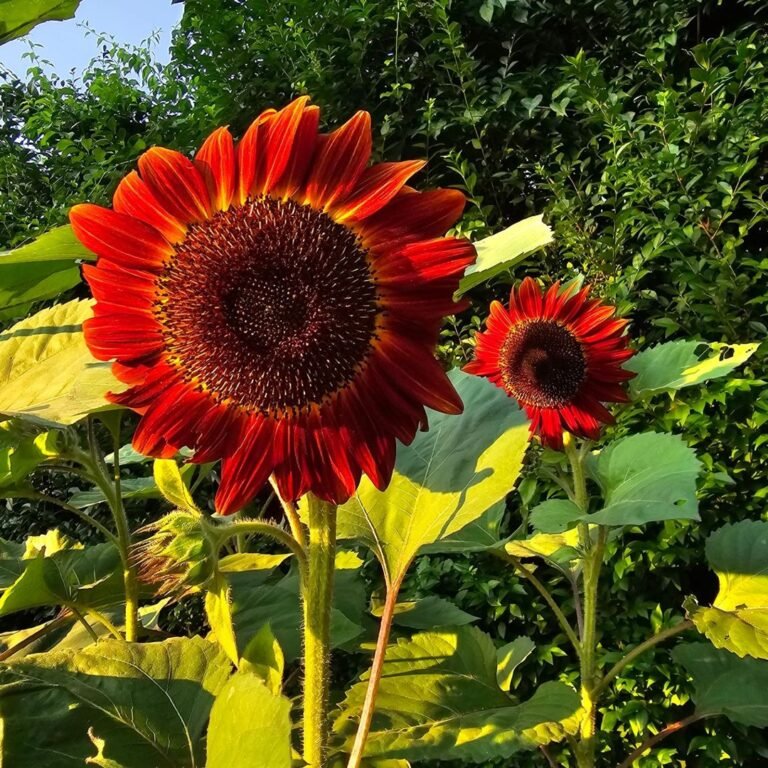
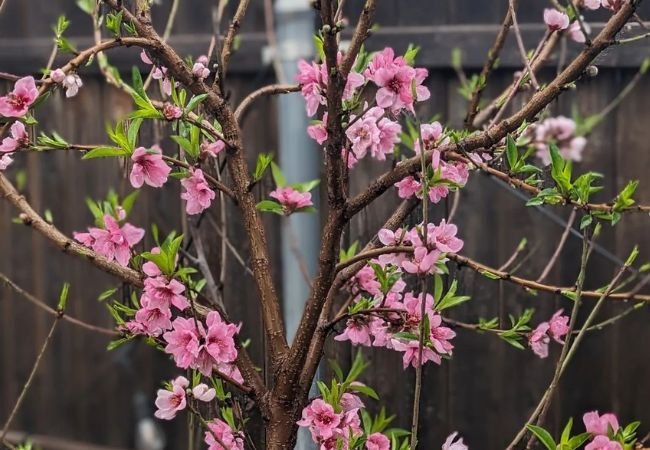
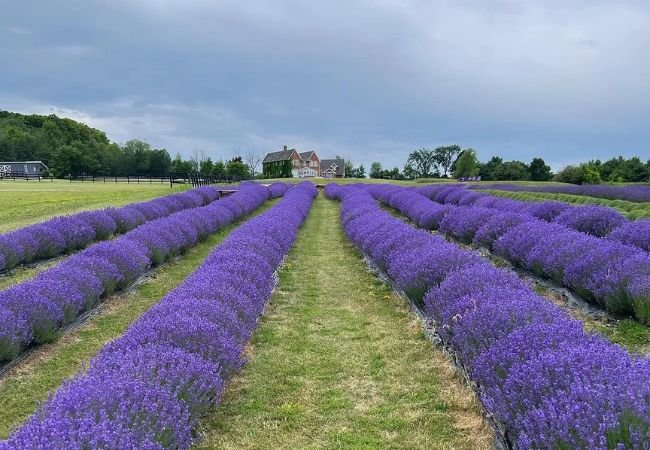
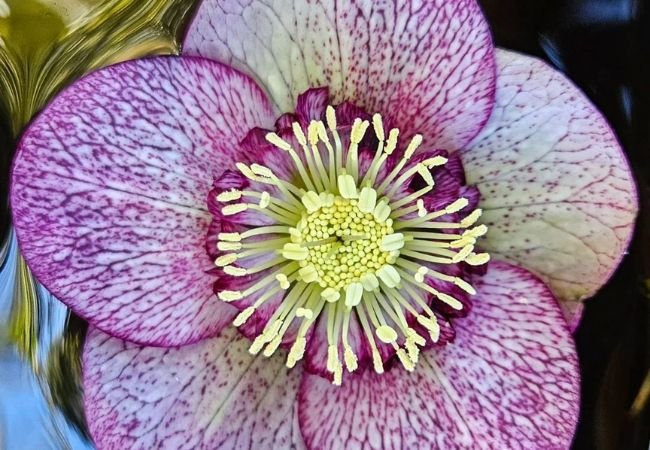
5 Comments